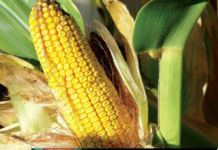
The systems approach, say the researchers, can be used to develop production recommendations and a production budget for organic vegetable producers, or for conventional growers interested in transitioning to organic production. The study was funded through a Southern Sustainable Agriculture Research & Education grant, “Evaluation of Crop Rotation for High Value Cool Season Horticultural Crop Production in Organic and Sustainable Systems” (LS10-225).
“The purpose of the project was to take a systems approach to evaluate crop rotations to produce high-value organic horticultural crops in the Piedmont and Coastal Plain of the Southeast,” said project investigator and UGA horticulturist George Boyhan.
Boyhan said that the project originally targeted Vidalia onion growers who were interested in organic production. Currently, about 300-400 acres of onions in Georgia are grown organically.
“We wanted to see what cool-season, high-value crops could be incorporated in the crop rotation for onion growers to boost their profits,” said Boyhan. “As the study went along, we found that the crop rotations would be suitable for any vegetable growers interested in organic production.”
onions
During the three-year trial, onions yielded the highest net return, averaging over $14,000 per acre. Photo credit: Julia Gaskin, University of Georgia
Boyhan, along with crop and soil scientist Julia Gaskin, plant pathologist Elizabeth Little, horticulturist Suzzanne Tate, and ag economists Sam Kaninda and Greg Fonsha studied two crop rotations over a three-year period: 1. Strawberries-bush beans-oats/Austrian winter peas-potatoes-sunnhemp-onions-southern peas; and 2. Broccoli-lettuce-sudan-sorghum/cowpeas-carrots-sunnhemp-onions-millet.
The rotations were developed with grower input to improve soil quality through cover crop biomass addition, to rotate between crop families to break pest cycles, to use cover crops to supply nitrogen and suppress weeds, and to use cover crops and crop cycles to suppress nematodes.
“The incorporation of the cover crops worked well in some cases,” said Gaskin, “specifically when cover crops were paired with a certain cash crop for a specific function.”
For example, said Gaskin, sunnhemp was always grown before onions. “Onions are a high nitrogen-demanding crops and sunnhemp is known to fix nitrogen. Sunnhemp is also good at suppressing nematodes and weeds,” she said. Results of the study showed that a sunnhemp rotation plus nutrients in the soil provided 75 percent of the nitrogen for onions.
By contrast, the sorghum-sudan and cowpea mix grown before carrots may not have been the best rotation, said Gaskin. “The idea was to suppress weeds and nematodes. But the sorghum dominated the mix, outperforming the cowpea,” she said. “Yields with carrots were not as good. Perhaps we were getting nitrogen immobilization or the sorghum was exhibiting allelopathic properties.”
Broccoli followed by lettuce worked well, but leave out the millet, said Gaskin. “Millet is not a great weed suppressor. But yields with broccoli and lettuce were very good,” she said.
Cover Crops
A millet-sunn hemp cover crop rotation for organic production of high-value cool-season vegetable crops. Photo credit: Julia Gaskin, University of Georgia
In terms of insect and disease pressures, insects were practically nonexistent, although there were some disease issues, said Little.
“We chose cool-season crops because they are the easiest to grow organically in our region due to low insect and disease pressures,” said Little. “We had some disease pressures like minor Botrytis in onions, sclerotinia in lettuce and beans, and a few leaf spots in strawberries, but nothing significant. We had very minor fruit rot problems, but no evidence of root diseases in strawberries, and no diseases in potatoes or carrots. As far as disease go, I’d say it was a success.”
Over the three-year period, onions produced the highest yields, exceeding the Vidalia county yield average each year. Lettuce and broccoli followed. Although potatoes and carrots store well, their yields were low.
With the regard to the economics of the crops based on variable costs, fixed costs, pre-harvest variables, and harvesting and marketing costs, onions had the highest net return, averaging over $14,000 per acre over the three-year period. Lettuce followed with a net return of over $9,000 per acre over the three-year period.
Other findings included:
Net return for the cash crops generally increased over time, except for the strawberries.
Summer cash crops of bush beans and southern peas were not profitable. Researchers speculate too short of a growing season between cool-season crops.
Highest value crops also had the highest total costs; however, the more acres the lower the total costs.
Cover crop costs averaged $6,000 per acre over the life of the rotation. However, the researchers emphasized that cover crops serve as a weed control/soil building/nutrient cycling program.
Average net returns by crop rotations were $17,592 per acre for Rotation No. 1, and $20,964 per acre for Rotation No. 2.
“The crop rotations show promise for mid-scale producers,” said Boyhan,” but the one thing we learned is that timing is critical. And this is an intensive system that requires work, and a market to sell the product.”
Source: Share Southern




